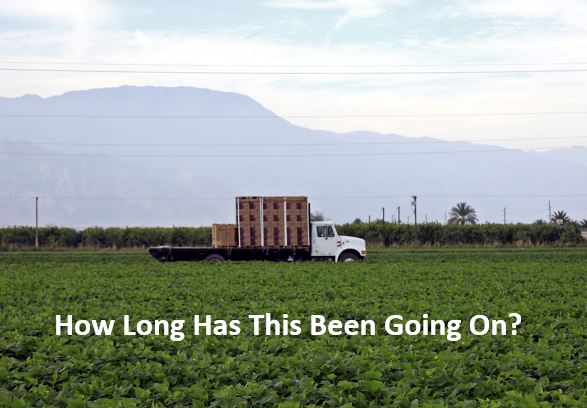Have you ever walked out to your yard and seen a long line of trucks with your produce waiting…in the hot sun? How is this impacting your post-harvest operational efficiency?
You might find yourself asking, like the 1974 song by Ace, “How long has this been going on?”
Whether you’re a grower, shipper or processor, managing costs is usually top of mind, especially when your biggest costs are labor and equipment. How can you make sure you’re efficiently utilizing both in your operations? What if your already limited labor resources are being underutilized? What if equipment is idling?
Identifying Areas for Improvement
As a first step to improving operational efficiency, do you know things like:
- How much time elapses from the field to the pack house?
- How long does it take to unload the truck?
- What’s the cycle time for the truck to return to the field?
- What’s your cut-to-cool time and is it meeting your target?
- Where are any bottlenecks and how can you fix them?
Not having the answers to these questions can have implications on your business, including your bottom line. For example, the amount of time your produce spends in the field at higher temperatures and experiences longer cut-to-cool times due to delays will impact produce freshness and shelf-life – things that can lead to increased rejection rates by retailers.
If there are problems such as trucks laden with fresh berries waiting in long lines to unload, you want to know right away.
Improving Utilization Through IoT & Real-Time Monitoring
To improve post-harvest operational efficiency, you need time and location data, which you can collect by using autonomous IoT sensors. These sensors track the necessary time and location information and automatically upload it into cloud-based applications for analysis and reporting. As a result, you have access to actionable insights that will answer each of the previous five questions.
We’ve found this approach can significantly improve the flow of vehicles and produce through your yard. Imagine being able to improve the cycle time of each of your trucks from the field to the yard and improve reload times to get that truck back out into the field to retrieve the next load of produce. By identifying peak times, bottlenecks and throttle points in your supply chain, you can then design and implement changes to fix any problem. That’s pretty cool.That improves your operational efficiency!
IoT sensors and cloud-based analytics software can provide more-efficient use of your labor and resources, as well as ensure your produce is processed according to your guidelines.
A new report by Transworld Research discusses these issues and provides guidance on how you can utilize new AgTech solutions to improve operations and efficiency.


